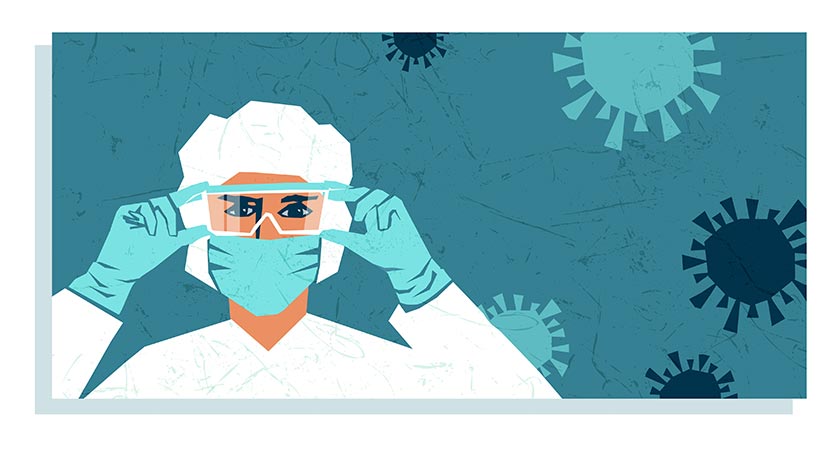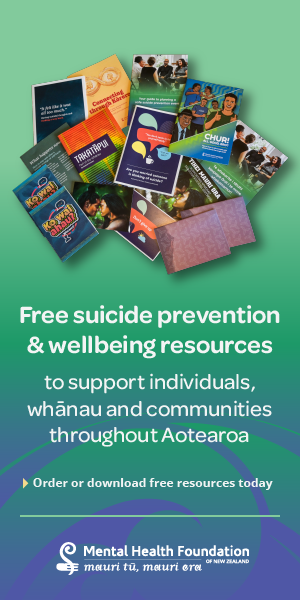As the COVID-19 emergency unfolded internationally, the elimination strategy New Zealand implemented reduced the impact of the pandemic on our population and its health services. Given the severe nature of COVID-19 in overseas populations, New Zealand chose strategic suppression to eliminate community transmission within its borders.1, 2 Decisions were informed by timely evidence, which enabled case detection, contact tracing and quarantine. Together with border closures and community engagement measures, these strategies enabled New Zealand to avoid the worst effects of COVID-19.
Māori, Pacific and Asian people were disproportionately affected in community outbreaks, so elimination of community transmission helped to protect those most at risk, especially those communities that already have inequitable health outcomes.
Across all sectors of the health service, population health has been the focus of the COVID-19 response, especially in terms of preventing infection transmission and providing timely and appropriate patient care.
Challenges for nurses
Nurses have been hailed as heroes in the international media, focusing attention on the collective response of thousands of nurses around the world for their care of people with COVID-19.3 Nurses’ contribution to managing the New Zealand response has been significant across all health sectors, but that contribution has also had its challenges. Nurses working in managed isolation and quarantine (MIQ) facilities have been identified as a particularly at-risk group for contracting the virus and taking it home to their families. These nurses are working in conditions that are uniquely demanding because of staff shortages and the use of facilities that were not designed for infection control.4
The impact of nurses’ work during the pandemic has created public attention globally.5 Naming nurses as ‘heroes’ makes the contribution of nursing visible, but at the same time potentially normalises risks nurses are subject to during a pandemic, especially when they are required to work in uncertain and sometimes dangerous conditions.3 Nurses are held up as outstanding examples of morality because they provide safe, effective, timely and equitable health care in adverse conditions. In an analysis of perceptions of nurses in the pandemic, one group of researchers made it clear that valuing nurses’ well-being was equally as important as valuing their expertise.6 It is important not to minimise the emotional and physical costs of the extra-ordinary responsibilities involved in practising in these circumstances, and the degree of support required to sustain nurses effectively in that practice.
Acknowledge professionalism
It is also important to value professionalism, leadership, knowledge and teamwork as qualities integral to how nurses respond to challenging situations.7 A 2020 study examined how rural primary care nurses responded to the challenges of the pandemic.8 The nurses in this study reported how they took on extended responsibilities to communicate and collaborate with health-care colleagues, local district councils and the public, to safeguard the health of their rural community. For example, they made phone calls to patients with health conditions to ensure they knew what to do and had support during the level 4 lockdown. These nurses increased the level of care they provided to patients to support their welfare and wellbeing, sometimes collaborating with welfare and other organisations.
They also rapidly upskilled their own knowledge on infection control, to support members of the community. Nurses had a leading role in providing education in primary care and rural settings, particularly in transmitting up-to-date health information about COVID-19 and the prevention of transmission.

It is important not to minimise the emotional and physical costs of the extra-ordinary responsibilities involved in practising in these circumstances.
Reflecting on events since March 2020, I’ve seen the the COVID-19 pandemic create a sudden shift in how our society and health services function.9 Learning to do things differently became the hallmark of nurses’ response to the pandemic. Born of necessity, a “giant leap toward telehealth”10 saw a rapid upscaling of virtual care capacity in many health services to enable contact with patients in a socially distanced world. Phone triage or self-triage tools became the first contact people had with health-care providers,11 utilising technologies that were already available, but not commonly used. Nurses have learnt how to “practise at a distance”,8 an innovation which is likely to become much more common in the future.
Telehealth potentially benefits greater numbers of patients, particularly in the way it reduces barriers such as distance. But for some people, telehealth may not be a perfect solution because – through lack of access to technology – they may be at risk of remaining disenfranchised in our modified world. Geographical location is also an important consideration in New Zealand, with rural areas having less access to adequate connectivity. There are also cultural, age or health related reasons why people are challenged in using technology.
Is telehealth ‘equity positive’?
Māori and Pacific people carry a disproportionate burden of chronic disease and report high rates of unmet health needs through lack of access to services.9 Whether telehealth can be an “equity-positive tool” in overcoming some of the barriers to health care for Māori and Pacific people remains to be seen.9 Nurses will need to be careful to mediate factors that distance people from telehealth services, particularly in maintaining person-centred and culturally safe nursing practice.
Teaching online
Over recent years, New Zealand tertiary education providers have followed the international trend towards blended learning in nursing education to better meet the needs of contemporary students.12 Blended learning approaches generally involve both online and practical or face-to-face sessions, with some delivery of content and resources online. But the COVID-19 lockdown resulted in nursing courses being delivered fully online, at least for the first part of the lockdown. New Zealand nurse educators rapidly “flipped” classes and workshop sessions to fully online modes, using a combination of video-conferencing and online activities to avoid disruption of students’ learning.
It was evident during this transition to working fully online that nurse educators were skilled users of digital platforms and had a good understanding of the challenges and benefits of online learning for students. When delivered well, blended learning has a positive impact on student achievement because it overcomes some barriers to learning, such as time and distance.12 Further research is needed to understand the impact and experience of teaching and learning fully online for both students and nurse educators, because it is likely the scale of online learning has increased in many programmes.
COVID-19 also disrupted nursing research and scholarship, often requiring changes to research protocols and subsequent revision of institutional ethics approval to conduct research differently to what had been proposed.13 I was involved in a research team exploring the experiences of registered nurses becoming designated prescribers during 2020. Once the state of emergency was declared in New Zealand, requiring isolation and social distancing, we were unable to continue face-to-face interviews and had to seek an amendment to our ethical approval to collect data via virtual means, using Zoom videoconferencing.
Less time to contribute
The challenging situations that nurses were experiencing in primary care settings also meant that nurses had less time to contribute to anything outside their work role. Working together in a research team to analyse data and write research reports was also compromised without suitable alternatives.13 Our research team was based in different locations, so we used “team management software” for planning and tracking our progress in conducting the research and collaborative writing sessions. It is likely we will continue working with this medium for future studies, because we can collaborate in real time and save time on travel to meetings.
It is possible that some researchers have experienced reduced productivity over the past year due to the changing demands and priorities of work environments, but at the same time the experiences of patients, families and nurses during the pandemic have provided a fertile ground for ongoing research.
The COVID-19 pandemic has made nursing visible in the media and the minds of the public, but that representation is not necessarily an accurate depiction of what nurses know and do in their everyday practice. It does not account for the knowledgeable, skilful, creative and capable practice that nurses contribute to health services,7 particularly in times of crisis. New Zealand nursing leader Jenny Carryer argues that now is the time to challenge historical constructions of nursing. It is time to emphasise what nurses have achieved in leading change in clinical, academic and research roles while the health of our population has been so threatened.
It is also time to support our nursing leaders in challenging structural weaknesses in our health system, and the policies and politics that govern it.

It is also time to support our nursing leaders in challenging structural weaknesses in our health system, and the policies and politics that govern it. The pandemic has highlighted gaps in the health workforce, and chronic under-investment in public health, and ongoing risks for our population who are already under-served by current arrangements.7
The pandemic has given nursing more visibility and a stronger voice to lead change and influence health policy and practice,6 so we need to avoid limiting our potential by challenging historical representations of nurses. Nurses, individually and collectively, are responsible for representing ourselves as expert capable members of a profession that is the core of New Zealand’s health service.
Patricia McClunie-Trust, RN, PhD, is a principal academic staff member at the Centre for Health and Social Practice, Te Tari Hauora me Te Tari Tikanga-ā-Hapori, Waikato Institute of Technology, Hamilton.
References
- Jefferies, S., French, N., Gilkison, C., Graham, G., Hope, V., Marshall, J., … & Priest, P. (2020). COVID-19 in New Zealand and the impact of the national response: a descriptive epidemiological study. The Lancet Public Health, 5(11), e612-e623. doi.org/10.1016/S2468-2667(20)30225-5
- Wilson, N., Barnard, L. T., Kvalsvig, A., & Baker, M. (2020). Potential health impacts from the COVID-19 pandemic for New Zealand if eradication fails: report to the NZ Ministry of Health. Ministry of Health.
- Mohammed, S., Peter, E., Killackey, T., & Maciver, J. (2021). The “nurse as hero” discourse in the COVID-19 pandemic: A poststructural discourse analysis. International Journal of Nursing Studies, 117, 103887. doi.org/10.1016/j.ijnurstu.2021.103887
- Gregan, K. (2021, February). Covid 19 coronavirus: stressed MIQ nurses warn they’re ‘going to get sloppy’. New Zealand Herald.
- Daly, J., Jackson, D., Anders, R., & Davidson, P. M. (2020). Who speaks for nursing? COVID‐19 highlighting gaps in leadership. Journal of Clinical Nursing, 29, 2751-2752. doi.org/10.1111/jocn.15305
- Bennett, C. L., James, A. H., & Kelly, D. (2020). Beyond tropes: Towards a new image of nursing in the wake of COVID‐19. Journal of Clinical Nursing, 29, 2753-2755. doi.org/10.1111/jocn.15346
- Carryer, J. (2020). Pride, power and professional trust in each other are essential if we are to move forward in this year of the nurse. Journal of Clinical Nursing, 29, 3577-3579. doi.org/10.1111/jocn.15377
- Ross, J., Mann, S., & Leonard, G. (2020). Rural Nursing During the COVID-19 Pandemic: A Snapshot of Nurses’ Experiences from Aotearoa New Zealand. Journal of Nursing and Practice, 3(1). doi.org/10.36959/545/382
- Gurney, J., Fraser, L., Ikihele, A., Manderson, J., Scott, N., & Robson, B. (2021). Telehealth as a tool for equity: pros, cons and recommendations. New Zealand Medical Journal (Online), 134(1530), 111-115.
- Al-Busaidi, I. S., & Martin, M. (2020). The transition to a “virtual practice” in primary care during the COVID-19 pandemic: experience from one medical centre in New Zealand. New Zealand Medical Journal, 133(1520), 91-98.
- Padmanabhan, P. (2020, March 28). Opinion: How the COVID-19 pandemic is reshaping healthcare with technology. CIO.
- Jowsey, T., Foster, G., Cooper-Ioelu, P., & Jacobs, S. (2020). Blended learning via distance in pre-registration nursing education: A scoping review. Nurse Education in Practice, 44, 102775. doi.org/10.1016/j.nepr.2020.102775
- Abshire, D. A., McDonnell, K. K., Donevant, S. B., Corbett, C. F., Tavakoli, A. S., Felder, T. M., & Pinto, B. M. (2021). Pivoting Nursing Research and Scholarship during the COVID-19 Pandemic. Nursing Research, Publish Ahead of Print. doi.org/10.1097/NNR.0000000000000493




